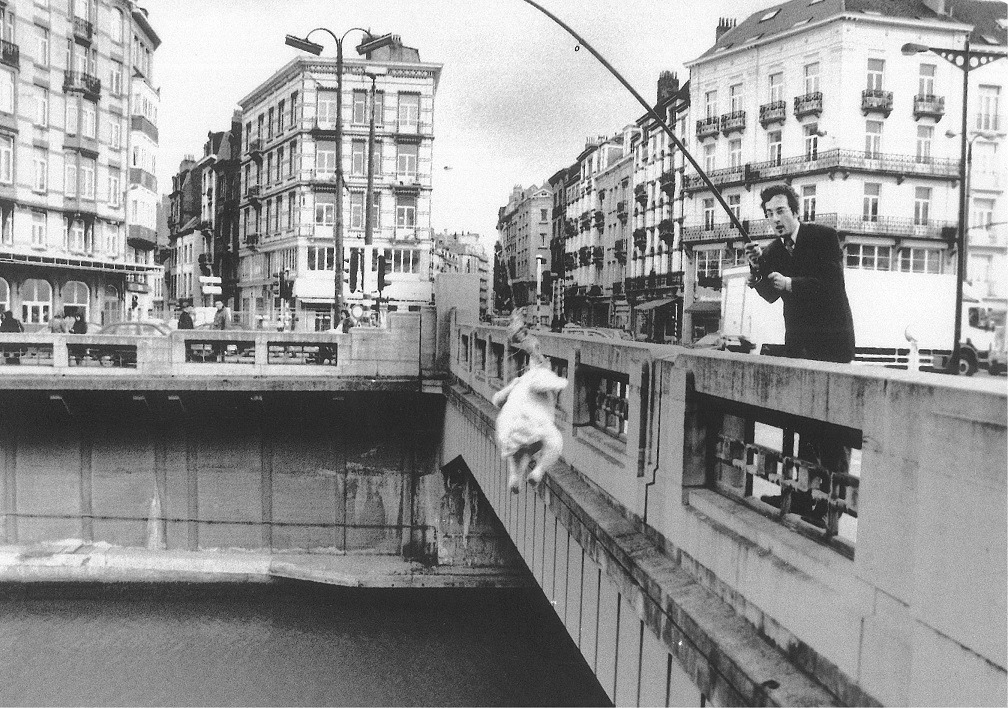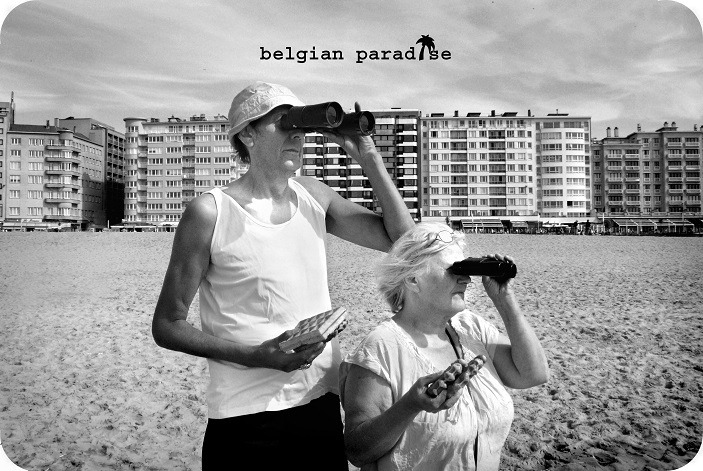
Olivier Brouwers
In addition to the Zwanse project, Olivier Brouwers has also published a photo reportage book based on his travels around the world and adventures in the lesser known parts of Belgium. The Brussels Times sat down with Olivier to learn more about his background, sources of inspiration and his future plans.
Q: One of your most famous projects, Zwanze, pays tribute to Brussels with a collection of surrealist postcards. How long did it take to compile them? Which ones are your favourites from the project?
A: Zwanze is indeed one of my most important projects. I started 15 years ago with the basic premise and idea that Brussels was badly sold. Most of the postcards were boring, touristic and commercial. My idea was to show the “human” side of Brussels as well as the surrealist and magical parts that are not obvious at first sight. I wanted to also combine this with “Zwanze humor”. It is important to be able to make fun of oneself.
Zwanze is still very much a work in progress. I have now continued the series outside Brussels into other parts of Belgium. “Belgian Paradise” for example, makes fun of and explores the typical stereotypes of Belgium and Belgians. How our country is (in)famous for having so much rain for example. I also look to poke fun at our food culture, bad architecture and post-industrial city landscape etc. At first sight, many of these themes can be considered ugly, but it is always possible to find beautiful things within the photography.
I have a lot of favorite photos from the collection. “The Pigs”, for example, was the result of a photo reportage which I did on the Carnival of Malmedy. I also very much like the last work that I did as part of “Belgian Paradise”, which depicts a couple eating Belgian waffles and looking out at the see. I had a lot of fun doing it and the people who stood around us were laughing. That is how you know you are going to get a good photo. When you and the people involved are having fun, the results are usually good.

I also like some of my older work. The man holding up a Le Soir newspaper in a tram for example. I think it really represents Brussels well with the older trams and fashion styles etc.
Q: Did you expect it would go so well?
A: Not at all. I never imagined that I would still be developing and expanding the project 15 years later. I invested all my savings when I first launched it. In the beginning, no shops wanted to have them. “This is not Atomium or Manneken Pis. I cannot sell this” was the feedback that I usually received.

Belgian girl eating fries
But I insisted and I was persistent. Slowly but surely my work became more accepted. The first ones to take them on were the museums, and then they started becoming more popular all over Belgium. Afterwards, I also starting producing larger framed formats and participated in a number of exhibitions.
I am lucky that I have been able to make a living from this, and it has allowed me to continue to develop both this project and also explore my other passion for travelling and street photography.
Q: Is your work based on spontaneous and random moments? Or do you stage and set some of them up according to your own ideas?
A: Most of the work from Zwanze are “mise-en-scène” (staged). This is partly due to the fact that there are privacy laws which you have to respect. The work in my book however, are not not “mise-en-scène”. It is pure reporting from my travels. The style is slow, poetic, funny and sad. But I have never been interested in documenting any wars or conflicts. Instead, I seek to show the daily aspects and simple things in life.
These are two completely different and opposite ways of working, and I like both of them. In Zwanze, I am more like a director in a film and try to capture a single moment from a movie. When I used to work at Cinematek many years ago, part of my job involved restoring old movies and I had to work directly with the film material in my hands. In old movie technology, each second is made up of 24 images. And that is how I initially got the idea for the Zwanze project.
In the classic movie Casablanca for example, you have some moments that are just perfectly framed. It is movie directing and “mis-en scene”, but it is also photography. I was very inspired by this. So I try to capture 1/24th of a second with each photo. And I want the viewer to be able to imagine the “before and after”.
Q: You have travelled extensively in Asia and in the Middle East. Which trips have been the most memorable?
A: It is hard to say. Each trip has been very interesting. I started early and went to India alone when I was 18. I wanted to discover the world and escape the easy ways of life here. I have always been a very curious and contemplative person. Travelling is almost like food for my eyes.
I went to Yemen twice in the 90s. Those were probably my favorite trips. Yemen is in my opinion the most beautiful country in the world. Everything about it is unique. Its architecture, landscapes, people, traditions and food. There is something special about all of it, and the fact that the country has always been quite closed has probably allowed it to keep a lot of its originality.

Yemen, Sanaa, 1994
I have always been a slow traveler, a slow photographer, and I like to take my time to meet new people and learn about new cultures wherever I go.
But I don’t think you have to go far to find beauty and discover new things. Even Brussels, for example, deserves a lot more time and attention than it usually receives. Most people run off to Brugge or Antwerp. But to me, a lot of parts in Brussels are fascinating. St Gilles, Ixelles, Scharbeek and Mollenbeek. They all have very interesting architecture. Brussels is such a diverse and multicultural city which makes it very special.
Q: How has the photographic profession evolved since your days fresh out of photography school?
A: I graduated in 1994. Since then it has become a lot more difficult. I never really tried hard to get into photo journalism and pursue a career within the press industry. Now it would be even more difficult. Everything is available for free and it is very hard to protect your rights. The only way to do it these days is if you do it as a hobby or passion, or if you can manage to become part of a successful boutique press photo agency or co-operative.
At the same time, it is also a question of confidence and being able to sell yourself well. Humility and lack of confidence is a common sport in Belgium unfortunately.

Man on bridge catching turkey
However, I like to be independent. I want to be free from the newspapers and agencies. I am a freelancer. And even if it is difficult, I am happy with the liberty that it gives me to do whatever I want. I take great pleasure from the small things and being able to simply take photos.
Q: What are your next projects?
A: “Belgian Paradise” is my latest extension to the Zwanze project and I would like to keep developing it. I am coming out soon with 10 new post cards, which will become a new “mini-collection”.
I have many ideas in mind. I would like to document our ugliness - which can be beautiful at the same time - and our exaggerations - that we eat too much, drink too much, have too much traffic and cars etc. In short, I make fun of the Belgian stereotypes. But it is in an ironic and even positive way, not cynical. I try to respect everyone.
There exists a lot of evil in humanity and the world. And we can cry everyday if we think about the negative things. But there are at the same time so many aspects in human life that are beautiful, simple and magical. My mission is to discover and document them.
By Boré Kedober

